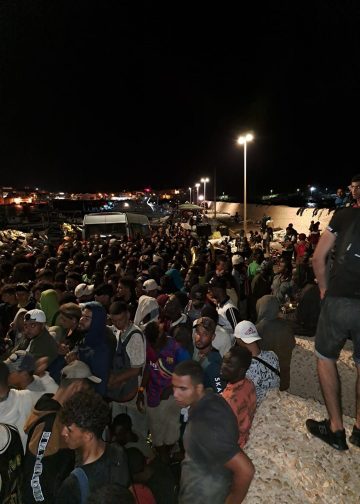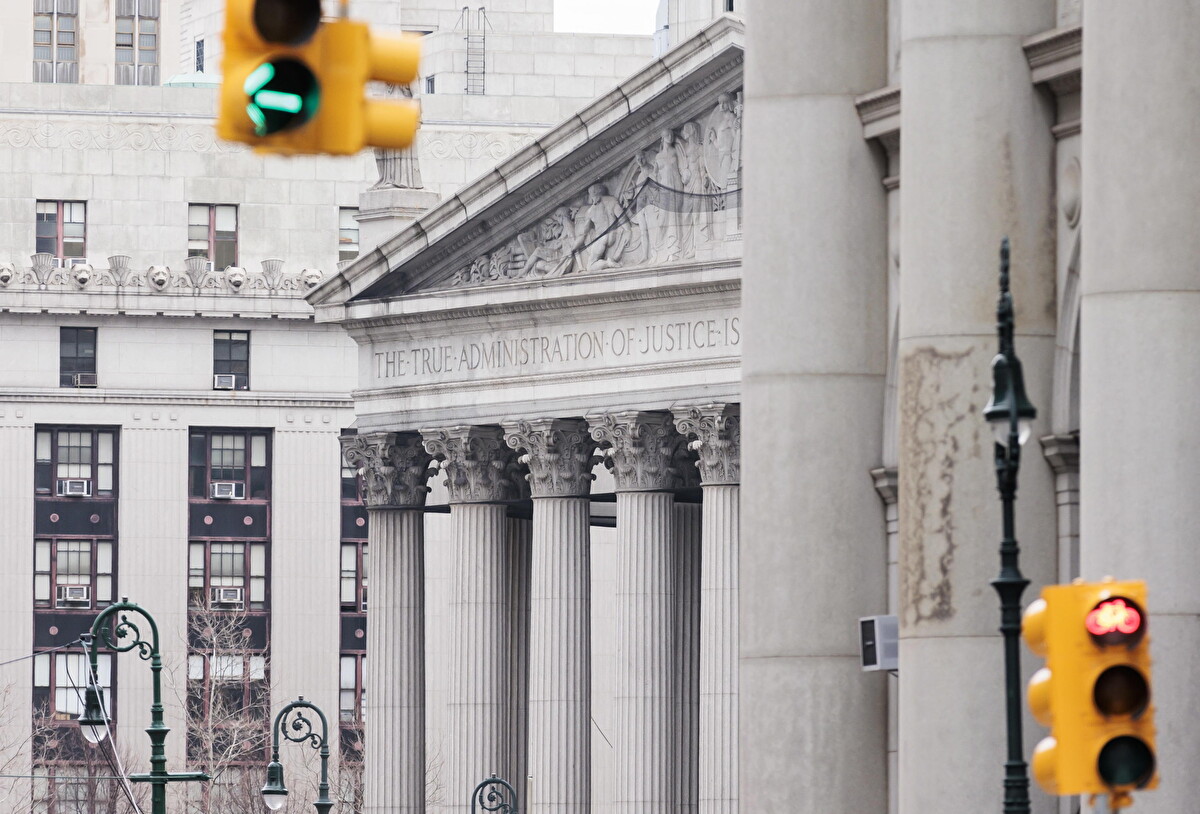The rocky shore of the Sicilian island of Lampedusa is beginning to look like a legitimate docking port for cruise liners as the surge of migrants making the perilous journey from Africa continues to grow. The little boats, almost all perilously overloaded, are lined up, waiting to land on the already overwhelmed island that serves as a port of entry for the desperate hordes looking for a better way of life in Europe.
Lampedusa, Italy’s southernmost outpost, had more than 4,200 migrants on Sunday after more than 110 weekend boat arrivals, local police chief Emanuele Ricifari told Reuters.
Early on Tuesday around 10 vessels headed to the island as others queued up. All told, 33 boats landed just on that day. That was on top of the 51 migrant-boat landings that took place on Monday, which brought 1,993 people to Italy’s southernmost point. Almost all of the boats departed from Sfax, in Tunisia.
Most of the migrants said they came from Nigeria, Sierra Leone, Sudan, Chad, Tunisia, Guinea or Cameroon and they said that they paid around 5,000 Tunisian dinars each for the crossing.
As a result, well over 2,000 people were at Lampedusa’s migrant hotspot early on Tuesday.
The hotspot has an official capacity of around 400 people, but it has recently been restructured under the new Italian Red Cross Management (CRI) to be able to handle much higher numbers on a short-term basis.
The facility is routinely overcrowded, with Italian news agencies reporting on Monday that it was hosting nearly 3,600 migrants.
The Italian Red Cross took over the running of the facility on June 1, replacing a cooperative that had been criticized for failing to provide adequate care.
The prefect’s department in the Sicilian city of Agrigento has arranged for a ferry to pick up around 600 people from Lampedusa and take them to Porto Empedocle. The Coast Guard ship Diciotti is also set to be used to transfer migrants from the island.

Emanuele Ricifari said that despite the “record numbers”, the authorities were in control of the situation.
Italian Prime Minister Giorgia Meloni said on Monday she was convening a ministerial panel for national security to improve her government’s response to the surge in migrant arrivals.
Italy has been struggling to accommodate arrivals from North Africa and the Balkans and the country’s Red Cross called on Monday for more international efforts against migration “chaos”.
Meloni said after a cabinet meeting she had activated the Inter-ministerial Committee for the Security of the Republic (CISR), which would remain in permanent operation in order to address the spike in arrivals.
“Our aim is to tackle the problem in a pragmatic way, with rapid and coordinated decisions,” Meloni, who has made the fight against illegal immigration a cornerstone of her political career, said in a statement.
Lampedusa is not the only point of entry being overwhelmed. In Northern Italy, it is the influx from the Balkans that is creating havoc. The Mayor of Trieste Roberto Dipiazza, was less sanguine than Ricifari as he complained to the Corriere della Sera about an unprecedented “invasion of migrants”.
“I have been dealing with problems related to migrants since the 1990s, I have seen everything and more, but I could not imagine such a thing. The city is in an emergency,” he said.
Italy has recorded around 113,500 sea arrivals in the year to date, compared with around 55,800 in the same period last year, according to interior ministry data.
CRI President Rosario Valastro said on Facebook, “I hope that not only Italy … but the whole European and international community will be able to respond effectively and not give in to chaos”.
Nevertheless, the Italian government’s policies are not as clear and transparent as the statements might suggest. While it has restricted the activities of charity rescue ships, impounding three of their vessels last week, it has also raised entry quotas for non-EU migrant workers to 452,000 for 2023-2025 from around 83,000 in 2022 in order to ease the consequences of a rapidly shrinking population and the consequent labor force shortages the country faces.
The complexity of the migrant crisis in Italy is not unlike that which is building in New York City as the numbers of those entering strains resources to the breaking point. City officials announced a plan last month to house 1,000 migrants in the parking lot of a state psychiatric hospital in Queens. More recently, city officials began last week to send migrants to recreation centers at two Brooklyn parks, McCarren and Sunset. Having exhausted even those facilities, migrants are now being shunted to Staten Island hotels.
The situation is a global crisis and each country faces its own particular struggles in its management.












